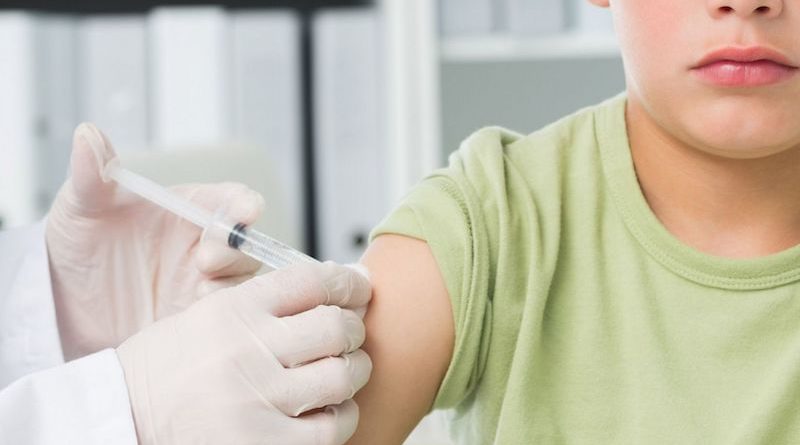
Looking ahead to the next decade for immunization in Europe
Vaccination is widely recognized as one of the most successful public health interventions ever developed. Vaccines have been responsible for the eradication of smallpox and rinderpest, near eradication of polio, control of several other once ubiquitous diseases and untold millions of saved lives.
Yet their full potential for preventing diseases and thereby contributing to society in broader ways, from preventing lost days at school, savings in healthcare costs, lost wages and productivity due to illness to reducing the risk of antimicrobial resistance, has not yet been realized. With the end of European Vaccine Action Plan 2015-2020 (EVAP) approaching, this is an opportune moment for the countries in the European Region to reassess progress and design a path forward that will help ensure the people of the European Region enjoy both optimal use of and the full benefits of vaccines.
In 2014, all 53 Member States of the WHO European Region (Region) unanimously committed to do more in the area of immunization and agreed on a set of key goals for their national immunization programmes. In addition to setting priorities, EVAP is a tool for the national immunization programme managers to lobby decision-makers for adequate programme funding; for ministries of health to benchmark and compare their progress to that of other countries; and for populations to gain better protection against vaccine-preventable diseases.
EVAP centers on a vision of what can be achieved through vaccination the control, elimination or eradication of vaccine-preventable diseases.
Realistic regional goals, including sustained polio-free status and measles and rubella elimination, laid out together with enabling objectives, such as financially sustainable immunization programmes, have served as a roadmap to achieve this vision.
In 2018, at the midpoint of EVAP, a detailed review was conducted to assess progress based on identified targets and milestones. What this review found was a mixed picture. Overall coverage increased, to 91% for the first dose of measles-containing vaccine in 2018, for example, but not by enough. Progress made in some countries did not match that in others: middle-income countries that lack any external donor funding or support were especially lagging behind in terms of achieving the vaccination coverage targets and providing their populations with the benefits of newer vaccines.
Measles coverage in the European Region as a whole is the highest in the world (together with the Western Pacific Region), yet measles and rubella elimination will, most likely, not be achieved during the life of EVAP and large measles outbreaks have swept through communities and countries, killing over 70 people in 2018 alone.
The ongoing measles outbreaks in the Region affecting even countries with high reported immunization coverage expose dangerous immunization gaps in individual and community protection against this and other vaccine-preventable diseases.
To stop the diseases that vaccines can prevent, more must be done in the Region to systematically identify the root causes leading to these coverage gaps and to devise effective responses in a tailored way to close them.
Immunization as a platform to provide other pertinent healthcare benefits, including the role of immunization in contributing to financial risk protection against health costs, will positively contribute to the concept of attaining Universal Health Coverage by the countries in the Region. With EVAP coming to an end in 2020, a strategic agenda for the next decade to amplify the efforts of countries to improve vaccination coverage and thereby protection against vaccine-preventable diseases in every community will give achievement of Universal Health Coverage a healthy boost in the Region.
A European strategic agenda for immunization for the next decade, developed by the countries in Region, will outline strategic focus areas to address the root causes of gaps in vaccination coverage in every community in the Region. The strategic focus areas will allow further strengthening of immunization systems to comprehensively reach everyone so that countries can attain and sustain the disease elimination and eradication goals of the Region in the next decade.
Building on the principles enshrined in EVAP and insights gained through its implementation, the starting point for this new strategic agenda will be equity every person in the European Region should have the same quality of opportunity to enjoy the benefits that the existing and future vaccines offer. Innovation and partnerships at all levels will be key to achieving this.
The new European regional immunization strategy will contribute to the strategic priorities outlined in Immunization Agenda 2030, a new global strategy for immunization.
By aligning itself to the principles of primary health care, the new regional strategy will be anchored in a “people at the centre” approach to developing national policies.
The strategic focus areas in the new strategy will be guided by national priorities and based on local data and evidence. National immunization stakeholders will thus be in the driver’s seat, both in development of the regional strategy and in its national adaptation and implementation. Only in this way can the new regional immunization strategic agenda apply to all peoples, all nations and all institutions in the Region.
 |
 |
|
Dr. Siddhartha Datta Programme Manager, Vaccine-preventable Diseases and Immunization programme, WHO Regional Office for Europe |
Ms. Catharina de Kat Communications, Web and Information Officer, Vaccine-preventable Diseases and Immunization programme, WHO Regional Office for Europe |



